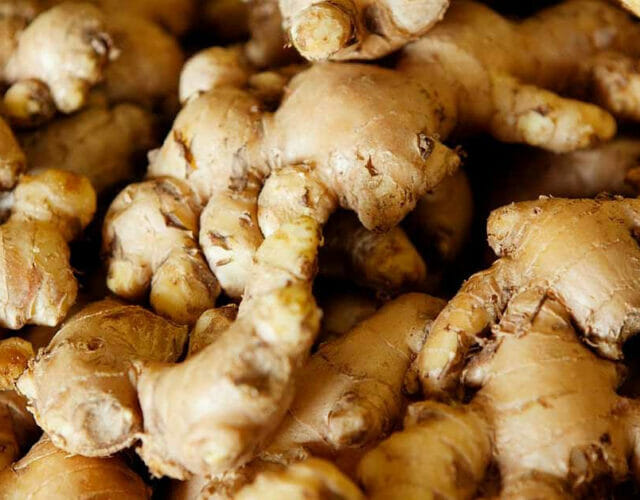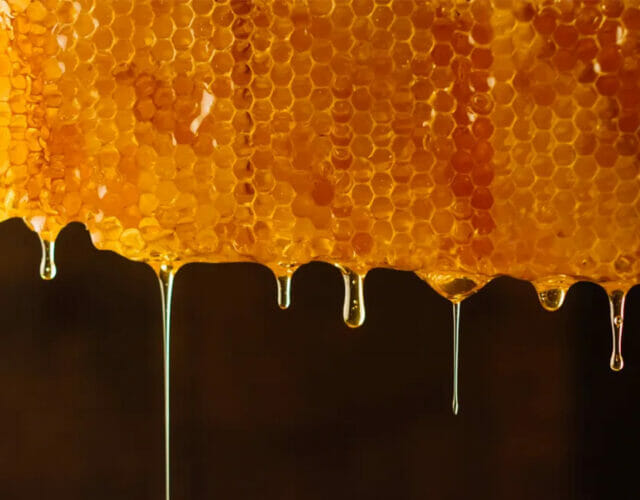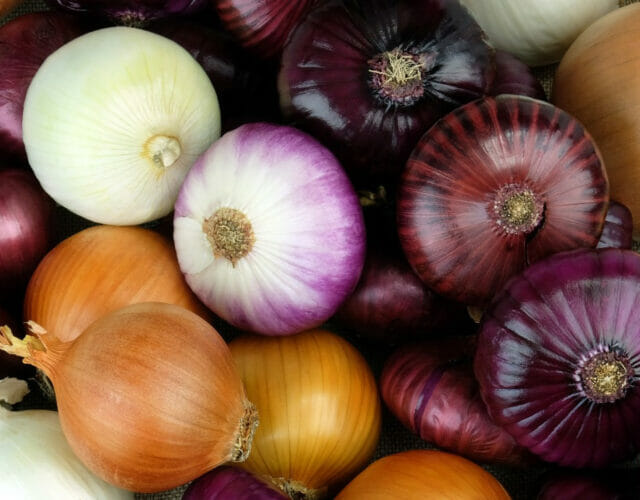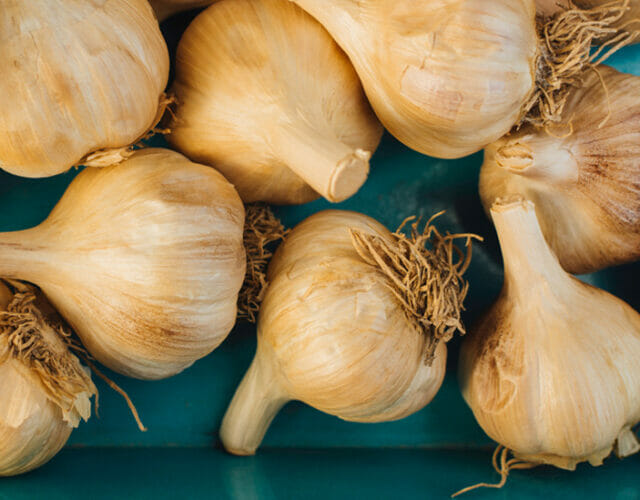What if a hidden force tried to keep you from breathing each and every day?
For the 25 million Americans who have asthma, this is part of their daily lives. Their airways get narrow, making it harder to breathe. And everything from allergens to household dust can make asthma even worse.

My oldest child suffered from asthma starting at the age of 3. I would have to bring home nebulizer treatments routinely to help her after she played outside or even if she came into contact with a dog or cat. Noncoincidentally, she is also my only child born via c-section – as c-section birth is a known risk factor for asthma, allergies, and eczema. If only I would have known about swabbing my daughters mouth with vaginal fluid at the time of c-section. Though it sounds gross, establishing a more normal microbiome likely would have prevented her asthma in the first place.
As my daughter’s symptoms worsened we had to increase her inhaled steroids and other harmful medications. This is what initially spurred me to find a better way.
The pharmaceutical industry has made billions from the sale of asthma medications and they have helped millions of families treat the symptoms of asthma. But there is little money to be made by finding the root causes of asthma, removing them, and letting the body heal. If you are worried about using a bunch of toxic immune suppressing medications like I was, then read on for more holistic approaches to your asthma and start breathing better today.
Although a number of the solutions below are more geared toward teens and adults, many can be applied to children as well. Remember the overall goal to manage asthma is to decrease inflammation and optimize our immune system. Our overactive immune systems, created by poor diet, environmental pollutants, and stress all increase reactivity in our lungs. This is also the reason that people with food allergies are much more likely to have asthma and vice versa.
1. Cut Sugar
Sugar intake is directly related to the development of inflammatory disorders. Sugar causes insulin levels to spike and after time leads to increased production of inflammatory molecules that overreact to particles in the air we breathe. Even maternal intake of sugar during pregnancy has been implicated in asthma development in kids. Another study took two groups of mice and fed one group a high sugar liquid and the other group water. They then gave the mice an allergan (like pollen) and the sugar fed mice developed an asthma like reaction in their lungs while their water-fed counterparts had minimal reaction.
Check the label on your foods for “added sugar” and avoid those products. Whole foods, vegetables, and fruits are best.
2. Cut Processed Foods
Not only are highly processed foods packed with sugar, but they are chock full of chemicals to provide taste, long-term shelf stability, texture, and colors. The majority of these “additives” are not found in natural foods and thus our bodies see them as foreign. The reactions to these chemicals range from general inflammation to asthma, negative effects on our nervous system, brain, cancers, and worse. Most countries in Europe have outlawed many of the chemicals placed in our processed foods everyday, but the food lobby is powerful in America and they remain.
My feeling is that all processed foods should be removed from children’s diets, but I’m pragmatic enough to realize that’s not always possible in today’s world. Remove all you can.
3. Mediterranean Diet
If you’re interested in making a larger-scale change to what you eat, then you should seriously look at the Mediterranean Diet.
This diet is sometimes referred to as a plant-based diet, but going on the diet doesn’t mean you fully give up meat. It just means that you primarily eat whole foods like fruits, veggies, seeds, and nuts. And when you do eat meat, you eat more chicken and fish than you do red meat.
Why is this diet good for asthma? Because it helps to reduce inflammation in your body, making it easier for you to breathe. Take the quiz below to see how you score in the mediterranean diet.
Give yourself 1 point for every Yes, 0 points for every No:
🥕I eat at least 2 cups of vegetables every day.
🍒I eat 2 or more pieces of fruit a day.
🌾I eat 2 or more servings of whole grains a day.
🐬I eat fish 2 or more times a week.
🌱I eat beans or legumes 4 or more times a week.
🌰I eat nuts or seeds almost every day. .
💦 I use olive oil as my main source of fat. .
🍷I drink a glass of red wine (but no more than 2) most days. (Not to the children please).
🐄I eat red meat no more than once a week.
______________________________________
SCORING: .
💜If you scored 8 or 9, your diet is highly consistent with the ideal MD
💚If you scored 6-7, your diet has a lot in common with the ideal MD
💛If you scored 4-5, your diet includes some elements of the ideal MD
❤️If you scored 0-3, your diet is not consistent with the ideal MD.
4. Eating Ginger

Some of the very best natural asthma remedies involve making changes to your diet. For example, eating more ginger can be a real game-changer for your breathing.
Ginger works well because it reduces inflammation. Therefore, consuming ginger regularly can help open up your airways and help with your breathing.
If you’ve never eaten ginger much before, don’t worry: there are some creative ways to make it part of your diet. This includes mixing ginger juice with things like honey and pomegranate juice.
All it takes is one tablespoon of this three times a day or less to help you breathe easier.
https://pubmed.ncbi.nlm.nih.gov/16788707/
5. Eating Honey

Growing up, your parents or grandparents may have recommended consuming honey as a way to deal with a cold, especially during winter. And as it turns out, this is a fun and tasty way to treat asthma as well!
Local honey helps reduce seasonal allergy symptoms as it introduces seasonal allergens to our body in a new way. The benefit of using local honey is due to the fact that it exposes us to the allergens common in our area. Consuming honey can also help deal with issues such as a sore throat and coughing, which we often see with asthma (or colds).
There are different ways to consume honey. Some people simply eat a spoonful of it each morning, sometimes with additions such as tulsi leaves. Others prefer to mix honey into hot tea each morning. (Remember, don’t give raw honey to infants)
6. Consuming Figs
Figs have actually been used to treat respiratory issues for many, many years. After all, figs can drain phlegm and help you breathe easier. And when used right, they can help you deal with annoying asthma symptoms.
Start by washing three dried figs and then soaking them in a cup of water overnight. In the morning, all you have to do is eat the figs and then drink the water.
This should help alleviate symptoms, though you’ll need to do this before you eat breakfast for maximum effectiveness. Your symptoms should lessen, and you might just discover how much you enjoy eating figs!
7. Eat More Onions

Many of us reflexively say “no onions” when ordering food at a restaurant. But if you like the taste of onions, or you can learn to add them to your diet, onions can really serve as a great asthma remedy.
That’s because eating onions provides you with sulfur that can reduce the inflammation in your lungs. And, of course, there are many different ways to eat onions.
Most people prefer to eat cooked onions, especially because it is so easy to add onions to dishes you are already cooking. Of course, if you don’t mind the taste, you can more quickly get the same benefits by simply eating the onion raw!
8. Use More Garlic

Garlic is another food with great anti-inflammatory properties. The chances are good that you already use garlic when you cook, so one of the easier and tastier ways to treat asthma is to simply use more garlic when preparing food.
In addition to simply using more garlic in your recipes, you can also eat garlic directly. Some people love the taste of garlic after they saute it with Nigella.
No matter how you enjoy your garlic, consuming it will help to open up your airways and ultimately help you to breathe easier despite asthma.
9. Using Turmeric
Sometimes, the most effective way to treat asthma is to treat the things that make asthma worse. For example, many people develop allergies, and allergies can seriously worsen your asthma. Fortunately, turmeric can help you fight off allergies!
How does this work? Basically, turmeric interacts with the histamines in your body and helps you fight off inflammation. In addition to helping prevent future asthma attacks, turmeric can help relieve you of asthma symptoms.
And turmeric is another ingredient that is easy to include in your daily recipes. By consuming turmeric every day, you can help treat your asthma.
10. Correct Vitamin Deficiencies
Deficiencies in Vitamins D, C and E have been implicated in asthma development so correcting these may improve asthma symptoms.
For vitamin D:
Get out in the sunshine
Eat fish like salmon or Cod
For vitamin C eat:
Bell peppers
Broccoli
Lemons
Oranges
Strawberries
Tomatoes
Green leafy vegetables
For vitamin E eat:
Avocado
Almonds and other nuts
Broccoli
Fish
Olive oil
Shellfish, like shrimp
Spinach
Sunflower seeds and other seeds
Tofu
If you struggle to get these foods, convenient supplements are available.
11. Use Magnesium
In a double blind placebo controlled trial children given supplemental magnesium for 2 months had better symptom control of their asthma than children receiving placebo. Find your magnesium supplement here.
12. Breathing Lavender Oil
According to a 2014 animal study breathing in diffused lavender essential oil may help reduce inflammation caused by allergies and asthma. The oil may be used for massage or add a few drops of the oil to a diffuser or a humidifier to reap the benefits. This lavender oil from doTERRA is my favorite.

13. Steam Baths
Looking for a really relaxing way to treat your asthma symptoms? In that case, your best bet may be to take a steam bath!
That’s because the primary function of a steam bath is to help you breathe more easily. These baths help you to deal with things like mucus and congestion, even as they provide some much-needed moisture to your airways.
At the end of the day, steam baths are a less direct remedy for asthma than changes to your diet. But in general, anything that helps make breathing easier for you is going to help you deal with asthma symptoms.
14. Acupuncture and Acupatching
You probably don’t normally think of acupuncture as a home remedy for asthma. However, this unconventional form of treatment is something that many who have asthma swear by!
Why does acupuncture work well in this regard? The short answer is that acupuncture helps to relieve the symptoms from a number of chronic conditions, and that includes asthma.
Not everybody with asthma benefits from acupuncture. But if acupuncture helps with your own symptoms, you may be pleasantly surprised at how much it helps with other conditions and how it can promote a better sense of your overall well-being.
If you are severely needle-phobic a second option is acupatching which provides many of the same benefits. You can check out Lifewave Patches Here.
15. Practice Yoga
You might be surprised to see yoga on this list. However, it’s actually fairly logical since stress is one of the things that can make asthma symptoms worse.
And in addition to helping with general relaxation, yoga teaches you special breathing techniques. By learning better breath control, you can get a better handle on your own asthma.
There are many yoga centers that offer classes geared toward kids and teens. In addition to yoga, to further reduce stress in your life, you may wish to consider adding the right supplements to your daily routine.
16. The Buteyko Breathing Technique
Like the Papworth Method, the Buteyko Breathing Technique is another specialized way of breathing. It mostly focuses on training yourself to breathe out through your nose instead of your mouth.
Why is that important? While breathing through the mouth feels more natural, it can also lead to a dry mouth, a dry airway, and an even greater risk of respiratory infections.
Additionally, this technique can reduce the severity of asthma symptoms. Put it all together, and Buteyko Breathing Technique is one of the best ways you can treat asthma without conventional medicine.
Home Remedies for Asthma: What’s Next?
Now you know some of the best home remedies for asthma. But do you know who can provide additional help in your lifelong fight against asthma?
Dr. Temple specializes in holistic medicine, offering natural ways to help you fight stress, asthma, eczema, and so much more. To discover the difference she can make in your life, contact her today!




